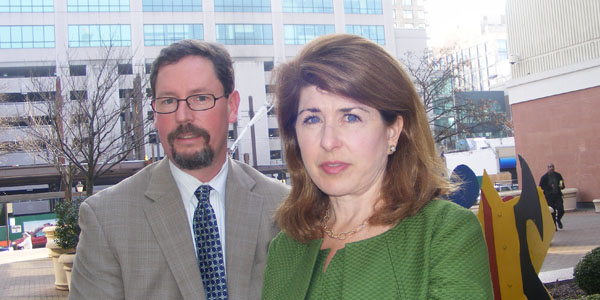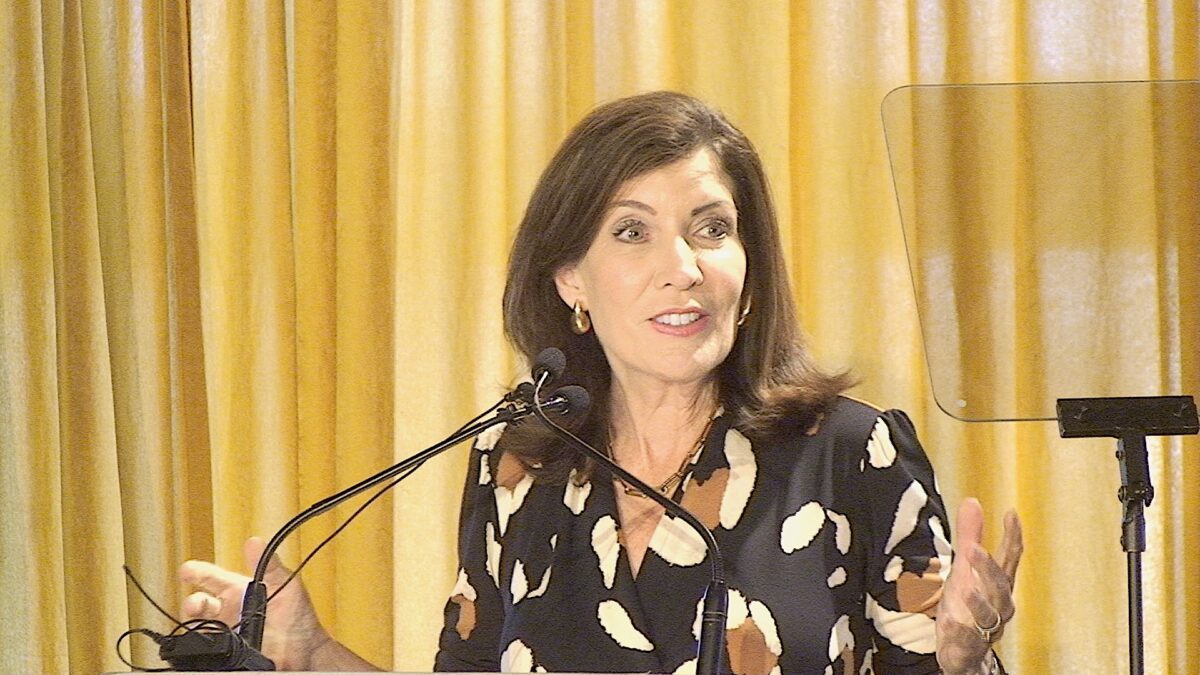
To White Plains attorney Thomas Skelton, a federal judge might have granted a sound night”™s sleep when on the last day of November she approved a settlement that will give back to his firm”™s union clients much of what Bernard Madoff stole from their pension and health funds over 15 years.
The middle-of-the-night emails that Skelton sent to his next-day self from bed ”“ where inspiration awakens a legal mind without regard for billable hours ”“ might not be as urgent or as frequent as an end seems near to the highly complex litigation in which he and another partner at Lowey Dannenberg Cohen & Hart have played leading roles.
“When you do a major litigation,” says Barbara Hart, “you do it in such a way that you”™re preoccupied by it day and night.”
Hart, the firm”™s chief operating officer and a litigator with an impressive record of multimillion-dollar securities fraud settlements, teamed with Skelton, her fellow Fordham Law School graduate, to recover $219 million for class-action plaintiffs from so-called “feeder funds” that invested their customers”™ money in Madoff”™s bogus investment securities company. The settlement agreement is expected to get final approval from U.S. District Court Judge Colleen McMahon following a fairness hearing in March.
If investors file no objections to a deal that required Hart and Skelton to forge what Hart calls “a global peace” among about two dozen law firms, the U.S. Department of Labor, New York”™s attorney general and state court judges in California and Minnesota, “We can write checks by April or May for real,” she says.
The Madoff fraud has preoccupied Hart and Skelton for nearly four years. They and their 16-attorney firm at 1 N. Broadway represented two upstate plumbers and steamfitters union locals that became lead plaintiffs in class-action litigation against Madoff-feeding investment managers in White Plains, Long Island and Syracuse. Their firm”™s fifth-floor office is a short walk up Main Street from the law office of two defendants in the suit, Joel Danziger and Harris Markhoff. (See related story, page 1.)
“This was the largest settlement the firm has ever achieved,” says Hart, a Chappaqua native whose father, Edward Hart, was principal at Horace Greeley High School for nearly 30 years. “What”™s remarkable about the litigation, this will represent about 70 percent recovery of net dollars” invested by the plaintiffs in Madoff”™s company. “I would put money on it that it”™s unprecedented in terms of rate of recovery.”
To compare, the Madoff bankruptcy trustee”™s approximately $1 billion settlement in 2011 with the felon”™s second largest feeder, Rye-based Tremont Group Holdings Inc., represented about 50 percent of Tremont customers”™ net investments with the Ponzi schemer.
In Syracuse, the 1,000-member Plumbers & Steamfitters Local 267 began investing their pension fund monies in Madoff”™s business, either directly or through feeder funds, in the mid-1990s, says Gregory Lancette, Local 267”™s business manager. “He stole it from day one.”
The news of Madoff”™s arrest four years ago this month “was very traumatic,” says Lancette. It “came at the worst time possible,” as union pension funds nationwide already had taken severe hits to their invested balances in the financial collapse and recession.
Lancette”™s father is a retiree of the plumbers and steamfitters union that his son now leads. “That was the hardest phone call I will have to make in my life,” Lancette says. “I told him, ”˜Something happened. I don”™t know if I can give you a pension at this point.”
From Buffalo to Binghamton, labor unions had heeded their investment advisers at Ivy Asset Management on Long Island. “What they were peddling was Madoff,” says Hart. “Because he had all the prestige surrounding his name, he was the cachet marketed by Ivy.”
With Madoff”™s arrest, “They were shattered,” she says of her clients. “Not only were their plans or their future shattered, their illusions were shattered. Not only were they shattered financially, they were shattered in their views of people and what you think about people, what was right and what was wrong. These are salt-of-the-earth guys.”
Lancette”™s union local did work out a 30-year restructuring plan that continues pension benefits to its 300 retirees at the same level as before they learned that the one-man, investment miracles-working Wall Street brand they”™d bought into was a fraud. “But we added five years to everybody”™s career that”™s still working,” raising the union”™s retirement age from 55 to 60 in an occupation where degenerative disease and hip and knee replacements are common among older workers, he says. And those workers”™ pension contribution rates were nearly doubled to make up for their pension fund shortfall.
Lancette says his local expects to recover about $14 million from the settlement and the separate liquidation of Madoff assets, money that should shorten the union”™s 30-year pension rehabilitation payment plan. The recovered sum amounts to “just about all of our initial pension fund investment.”
The union”™s investment with Madoff had grown to a book value of about $33 million, he says. Unfortunately for his hard-laboring victims, Madoff”™s book was a work of fiction.
Lancette thinks his union would have recovered less money if they had not been represented by Hart and Skelton and had not taken an active role as plaintiffs. “They were just so diligent about it,” he says, “They”™re very organized.”
The consensus reached by law firms and government regulators involved in a case of extraordinary magnitude “came under the leadership of Barbara Hart and Tom Skelton,” says Lancette. “They were the point of the arrow.”
Law firms in the class action stand to collectively receive about $40 million in contingency fees after payments to the federal Labor Department and state attorney general”™s office, Hart says. In negotiations with federal officials, attorneys agreed to lower their initial contingency fees to 20 percent of the recovered amount from either 22 percent or payment capped at four times their billable hours in the case.
With the negotiated payment, “The lawyers at those rates are going to get less than one times their hours” on the case, says Hart. Her firm”™s high risk in taking on the unions”™ case will not return a high reward.
“We have a long way to go,” Skelton cautions. The arrow has not yet reached its target.


















